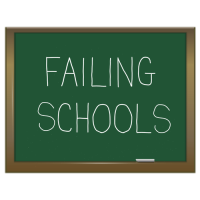L.A. Schools Misapplied $145 Million Meant for High-Need Students

After whacking $2.7 billion from K-12 education budgets in the wake of the Great Recession, the state decided to spend some of its newfound surplus on schools. Among the beneficiaries last year was the Los Angeles Unified School District (LAUSD), which received $145 million for children from low-income families, English learners and foster youth.
That didn't quite happen.
A study (pdf) by the University of California, Berkeley, says much of the money was spent on restoring staff positions that were not directly tied to instruction. State lawmakers had targeted the money at pupils most at risk of poor academic performance, a group that makes up 80% of LAUSD enrollments. But the report found “no coherent strategy for distributing dollars to schools serving the pupils that generated these new revenues.”
Fifty-five percent of the $145 million went to high schools, where it funded teachers, grounds workers and clerical staff, but few counselors or advisors directly involved with high-need students. High schools took the biggest financial hit during the bad funding years.
Elementary schools got 26% of the money and 19% went to intermediate/middle schools. In hiring librarians, instructional specialists and assistant principals, “The district largely ignored their equity formula in distributing investment dollars to elementary schools,” the report said.
The review, conducted on behalf of United Way of Greater Los Angeles and paid for by the California Endowment, looked at how the school district has spent money the past two years allocated using the Local Control Funding Formula (LCFF). LCFF is a new initiative by the state to get money to the neediest students, and special education was the largest beneficiary the first year.
That's consistent with the state's intention, but distorted the intent to help the larger Target Student Population (TSP) of need. “The first full year of LCFF implementation has been dedicated largely to rebuilding the status quo, rather than rethinking how to construct a pro-equity strategy, target dollars on a discrete set of program models, and track what’s working over time,” the report said.
Rather than create a comprehensive plan to spend the LCFF money programs and instruction in the neediest schools and equalize education dollars between haves and have-nots, much of the money was used to backfill positions obliterated when the state cut $2.7 billion from K-12 education from 2009 to 2013.
The report did not attribute the misallocation of funds to any nefarious behavior on the part of district officials. “District officials and board members appear genuinely committed to mobilizing the tools and dollars now available through LCFF to narrow historical inequalities,” the report said.
School principals told interviewers that they did not generally regard LCFF as being part of a coherent district strategy aimed at closing achievement gaps. One principal expressed surprise when he found out he was supposed to write a plan to justify how he would spend LCFF money.
By virtue of the crushing number of high-needs students in the district, and the targeting of special needs students, LCFF money did reach some of its target. But it didn't generate a new, coherent approach to developing models and augmenting programs that can be built on over the years.
“They’ve funded a smattering of new positions and they’re sprinkling new dollars on the schools, but there’s been no conversation with principals about how the various threads of new funding can be woven together into a school-wide reform strategy to lift low-achieving kids,” UC Berkeley professor and study lead author Bruce Fuller told the Los Angeles Times.”
LAUSD released a new $8.1-billion spending plan (pdf) for 2015-16 last week, and credited increased LCFF funds for balancing the budget for the second year in a row.
–Ken Broder
To Learn More:
LA Unified Falls Short of LCFF Goals, According to Study (by Vanessa Romo, LA School Report)
Report: LAUSD’s Short-Changed Disadvantaged Schools, Students (by Thomas Himes, Los Angeles Daily News)
L.A. Unified Funding for High-Need Students Off Target, Study Says (by Teresa Watanabe, Los Angeles Times)
Funding for High-Need Students in LAUSD's $8 Billion Budget (by Annie Gilbertson, KPCC)
Implementing the Local Control Funding Formula: Steps Taken by LAUSD in Year Two, 2014-15 (University of California, Berkeley) (pdf)
- Top Stories
- Controversies
- Where is the Money Going?
- California and the Nation
- Appointments and Resignations
- Unusual News
- Latest News
- California Forbids U.S. Immigration Agents from Pretending to be Police
- California Lawmakers Urged to Strip “Self-Dealing” Tax Board of Its Duties
- Big Oil’s Grip on California
- Santa Cruz Police See Homeland Security Betrayal in Use of Gang Roundup as Cover for Immigration Raid
- Oil Companies Face Deadline to Stop Polluting California Groundwater





